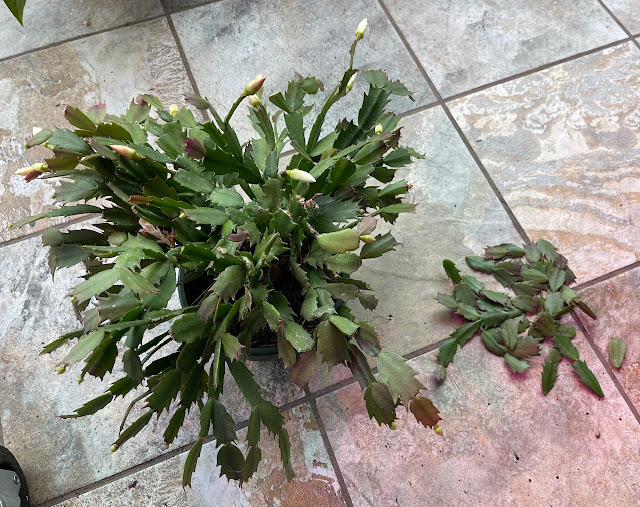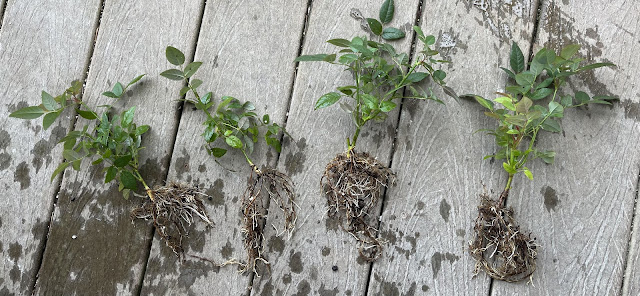Continuing Spring pruning. Last fall, I had the deer fencing removed from around the Gravenstein apple tree. It's big enough now, I think I can keep branches above convenient, deer salad bar height. It's a lot easier to maintain an unfenced tree, thin fruit, pick fruit, prune, and mow, if the deer cage is gone.
Here is the after photo.
The goals for fruit trees in deer country are the same as everywhere else, but also to keep branches out of convenient reach for deer browsing, I say "convenient" because a motivated deer can stretch really high, or can pull down willow branches. But I have not had a problem when I kept the branches and leaves up high.
I like to have open center, for air circulation and for sunshine throughout the tree. I don't like branches that rub on each other, so one of those has to go.
Bearing branches should not be long and willowy. Even half inch branch at 10 feet high can droop to a few feet from the ground. The you get this -
I have been aiming for young bearing branches about a foot or two, off the heftier scaffold branches, This also prevents excessive weight of too many apples, from breaking the limbs.
This tree has a pollinating graft that blooms at the same time. I used Airlie Red Flesh, which has pink, almost red flowers.
That compares to the pale, almost-white flowers of Gravenstein.
Aren't they beautiful? And they smell like apple blossoms.
Also, if a branch looks good but needs to be lifted or shifted to fill in a dead space, I tie it with cotton clothesline rope. It's strong, easy to tie good knots (unlike plastic string), biodegradable but lasts a few years outside.
I did cut a couple of scaffolding branches that were too high or too low, or crossing another.
I cut off any buds or twigs below about six feet high, so as not to get a deer started and wanting more.
Here is the before photo.




















































